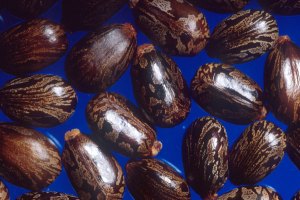A Little Information About Ricin
April 18, 2013
As you may have heard, letters indicating the presence of the biological toxin ricin were mailed to both President Obama and Senator Roger Wicker of Mississippi on April 16 and 17. Ricin is a very powerful poison created from castor seeds, is relatively easy to make, is most deadly when inhaled, and can kill within 36 to 48 hours – there is no antidote. It is most effective when used as a targeted assassination tool rather than in an attack on the general public. The most well-known use of ricin as a weapon is the assassination of Bulgarian dissident Georgi Markov by agents of the KGB in 1978. It was also the focus of law enforcement agencies in Georgia in 2010 when 4 men belonging to a fringe militia group were arrested under suspicion of plotting to disseminate a large quantity of the toxin via explosive devices.
Below is the Ricin section of my book, Surviving Terrorism (which did not transfer very well to this blog site – my apologies):
RICIN
What is ricin:
Ricin is a poison that can be made from the waste left over from processing castor beans. Even amateur bioterrorists can produce the toxin and can be made in the form of a liquid or crystalline form, powder, mist, or a pellet. Ricin is a stable substance (for example, it is not affected much by extreme conditions such as very hot or very cold temperatures) and can survive a considerable time in the environment.
Signs and symptoms of ricin exposure:
• Inhalation: Within a few hours of inhaling significant amounts of ricin, the likely symptoms would be coughing, tightness in the chest, difficulty breathing, nausea, and aching muscles. Within the next few hours, the body’s airways (such as lungs) would become severely inflamed (swollen and hot), excessive fluid would build up in the lungs, breathing would become even more difficult, and the skin might turn blue.
• Ingestion: If someone swallows a significant amount of ricin, he or she would have internal bleeding of the stomach and intestines that would lead to vomiting and bloody diarrhea. Eventually, the person’s liver, kidneys, and spleen will stop working and the person could die.
• Injection: Injection of a lethal amount of ricin at first would cause the muscles and lymph nodes near the injection site to die. Eventually, the liver, kidneys, and spleen would stop working, and the person would have massive bleeding from the stomach and intestines. The person would die from multiple organ failure.
• Death from ricin poisoning could take place within 36 to 48 hours of exposure, whether by injection, ingestion, or inhalation. If the person lives longer than 5 days without complications, he or she will probably not die.
• Showing these signs and symptoms does not necessarily mean that a person has been exposed to ricin.
How does ricin work:
Ricin works by getting inside the cells of a person’s body and preventing the cells from making the proteins they need. Without proteins the cells die, and eventually the whole body can shut down. Specific effects of ricin poisoning depend on whether it was inhaled, swallowed, or injected.
Where is ricin found and how is it used:
Castor beans are processed throughout the world to make castor oil. Ricin is part of the waste “mash” produced when castor oil is made. It also has some potential medical uses, such as bone marrow transplants and cancer treatment (to kill cancer cells).
How can people be exposed to ricin:
It would take a deliberate act to make ricin and to use it to poison people. Accidental exposure to ricin is highly unlikely.
• People can breathe in ricin mist or powder and be poisoned.
• Ricin can also get into water or food and then be swallowed.
• Pellets of ricin, or ricin dissolved in a liquid, can be injected into people’s bodies.
Depending on the route of exposure (such as injection), as little as 500 micrograms (500,000th of a gram) of ricin could be enough to kill an adult. A 500-microgram dose of ricin would be about the size of the head of a pin. A much greater amount would be needed to kill people if the ricin were inhaled (breathed in) or swallowed.
How long can ricin exist in the environment:
Ricin is a very stable substance and is not affected much by extreme conditions such as very hot or very cold weather.
Can ricin be transmitted person-to-person:
Ricin poisoning is not contagious. It cannot be spread from person-to-person through casual contact.
Is there an antidote for ricin:
No antidote exists for ricin. It is treated by giving the victim supportive medical care to minimize the effects of the poisoning.
